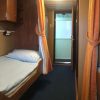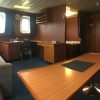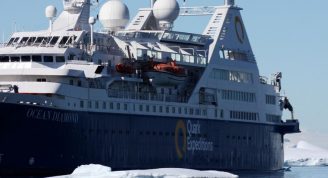Description
Voyage to one of the least visited coastlines in the world and discover for yourself why East Antarctica held such a fascination for pioneering Antarctic explorer Sir Douglas Mawson. Enjoy the pleasures of exploration and observation and experience the panoramic and the intimate; the majestic vista of the world’s largest glacier and a young Adelie Penguin taking its fi rst ocean dip. The natural world beckons and rewards with rare whale sightings and abundant birdlife. East Antarctica opens to us further as we examine Mawson’s legacy.
Trip Name
In the Wake of Mawson (Akademik Shokaliskiy)
Days
25
Overview
Vessel Type: Expedition
Length: 71M
Passenger Capacity: 50
Built / refurbished: 1984
The identical sister ship to Spirit of Enderby, Akademik Shokalskiy is the complete expedition vessel. Built in 1984 for polar and oceanographic research, Akademik Shokalskiy is fully ice strengthened and famously joined a Russian convoy of the Northeast Passage in the late 1980s, as well as completing the journey unassisted. This class of vessel is world-renowned for Polar expedition cruising because of its strength, manoeuvrability and small passenger numbers.
ONBOARD FACILITIES
• 2 Dining Rooms
• 24-hour Tea/Coffee Station
• Bar • Lounge • Sauna
• Lecture Room
• Fully-stocked Library
• Clinic/Hospital
• Ship to Shore Communications via Satellite














